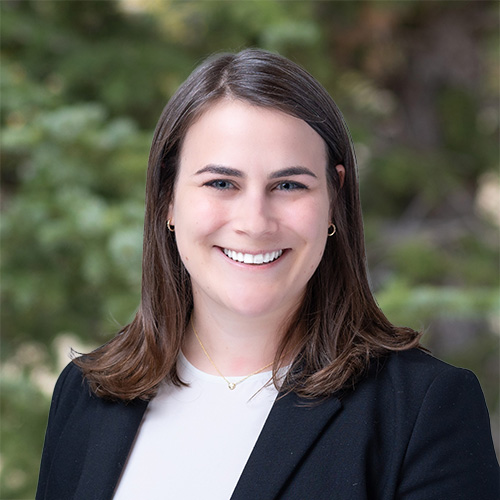
Ms. Alice Blayney is a professional engineer and project manager with 9 years of environmental consulting experience focusing on site assessment, remedial design/implementation and litigation support. She has experience relating to a wide variety of contaminated media, including soil, groundwater, indoor air, sediment, and dust, and contaminants including chlorinated solvents, petroleum products, per- and polyfluoroalkyl substances (PFAS), manufactured gas plant (MGP) waste, and radioactive isotopes. Ms. Blayney has also designed remedial systems for enhanced in situ bioremediation, subslab depressurization, soil vapor extraction (SVE), zero-valent iron injection, targeted remedial excavations, and technical impracticality demonstrations.
M.S., Civil and Environmental Engineering, Stanford University, Stanford, California, 2014
B.S., Environmental Engineering, Stanford University, Stanford, California, 2014
Professional Engineer, Massachusetts (License No. 54101), Illinois (License No. 062074914)
Hazardous Waste Operations and Emergency Response 40‑Hour Certification (2014; refreshers 2015, 2016, 2017, 2018, 2019, 2020, 2021, and 2023)
Member of Commercial Real Estate Women (CREW) Chicago Chapter
Member of Air and Waste Management Association Great Lakes Chapter
Alice Blayney, P.E. Consultant
Ms. Alice Blayney is a professional engineer and project manager with 9 years of environmental consulting experience focusing on site assessment, remedial design/implementation and litigation support. She has experience relating to a wide variety of contaminated media, including soil, groundwater, indoor air, sediment, and dust, and contaminants including chlorinated solvents, petroleum products, per- and polyfluoroalkyl substances (PFAS), manufactured gas plant (MGP) waste, and radioactive isotopes. Ms. Blayney has also designed remedial systems for enhanced in situ bioremediation, subslab depressurization, soil vapor extraction (SVE), zero-valent iron injection, targeted remedi...
Ms. Alice Blayney is a professional engineer and project manager with 9 years of environmental consulting experience focusing on site assessment, remedial design/implementation and litigation support. She has experience relating to a wide variety of contaminated media, including soil, groundwater, indoor air, sediment, and dust, and contaminants including chlorinated solvents, petroleum products, per- and polyfluoroalkyl substances (PFAS), manufactured gas plant (MGP) waste, and radioactive isotopes. Ms. Blayney has also designed remedial systems for enhanced in situ bioremediation, subslab depressurization, soil vapor extraction (SVE), zero-valent iron injection, targeted remedial excavations, and technical impracticality demonstrations.
- Site Remediation
- Remediation Construction Oversight
- Site Assessment
- Remedial Design
- Real Estate Transactions
- Feasibility Studies
- Litigation Support

